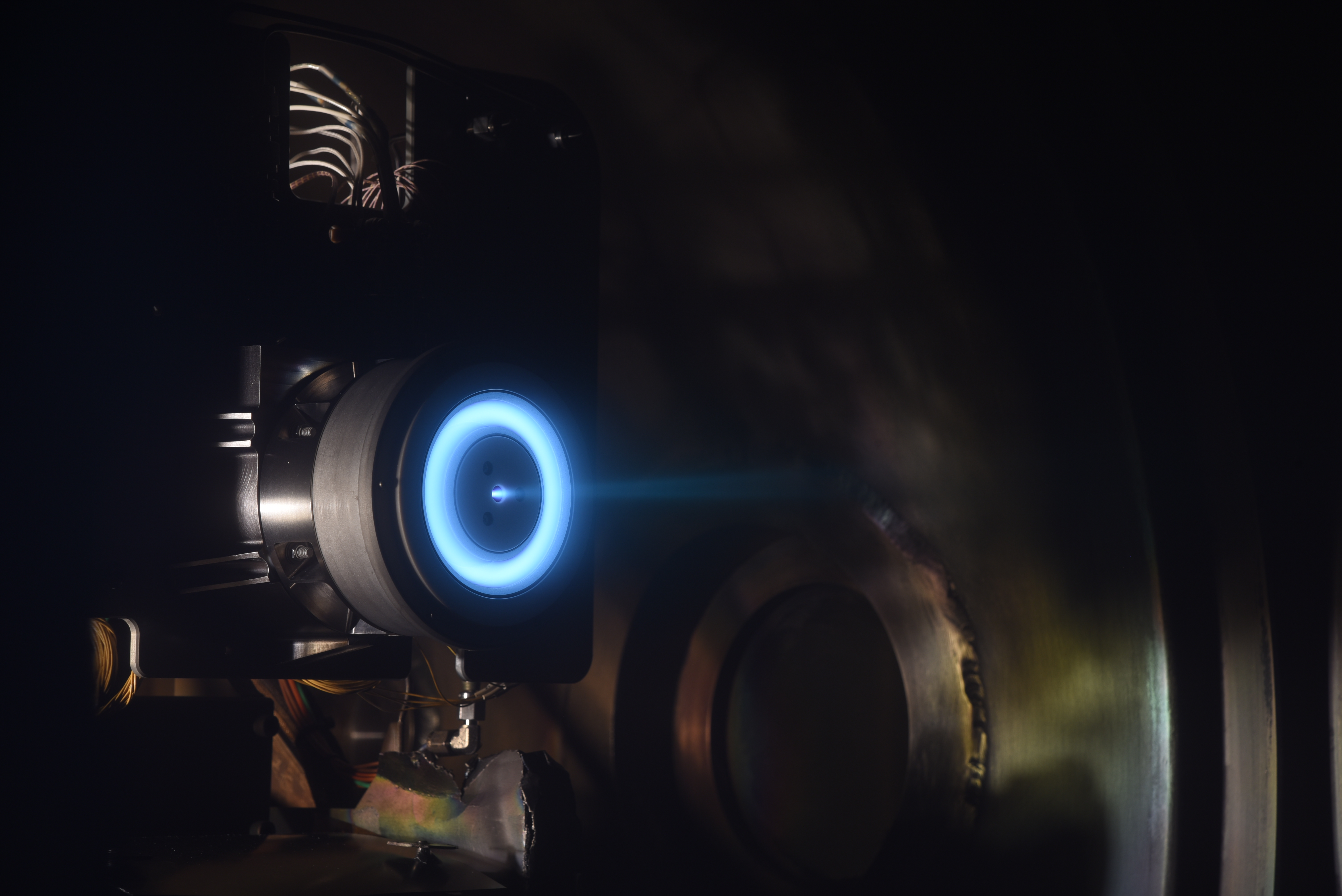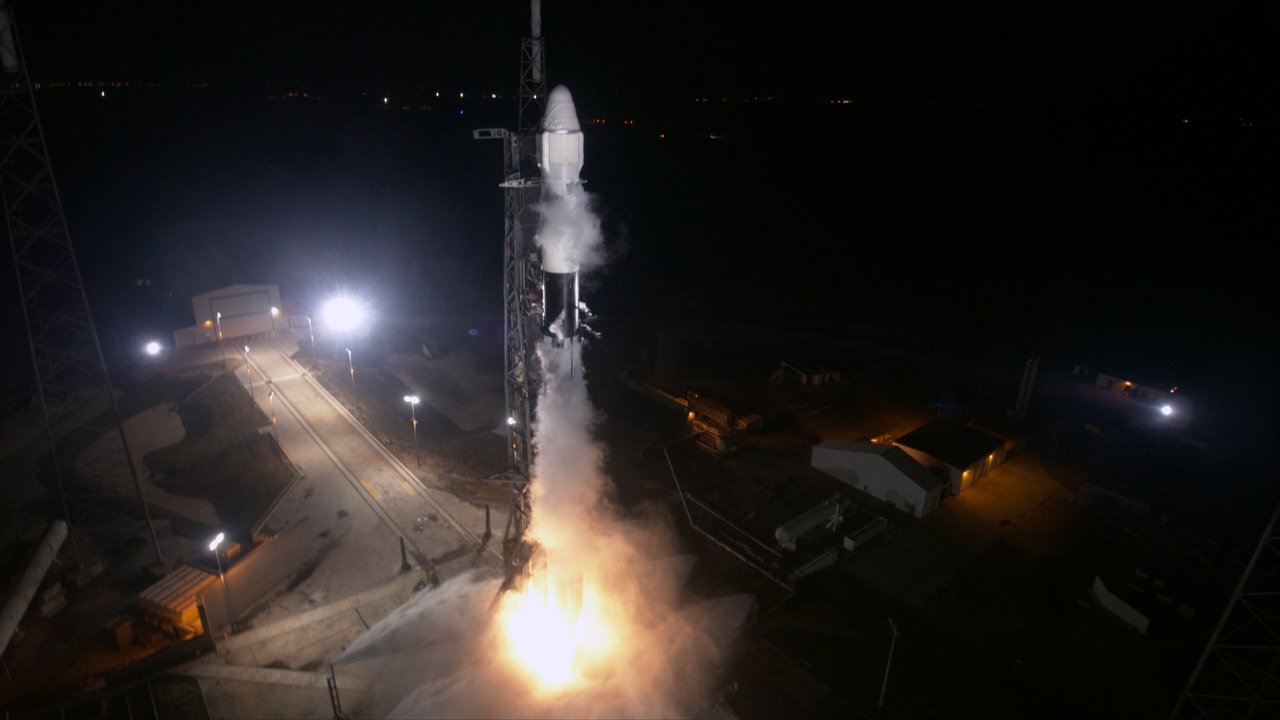After launching at 2:48 a.m. EDT Saturday, a SpaceX Dragon cargo spacecraft is on its way to the International Space Station with approximately 5,500 pounds of NASA cargo and science investigations that include research into Earth’s carbon cycle and the formation of asteroids and comets.
The spacecraft launched on a Falcon 9 rocket from Space Launch Complex 40 at Cape Canaveral Air Force Station in Florida and is scheduled to arrive at the orbiting laboratory on Monday, May 6. Dragon will join five other spacecraft currently at the station. Coverage of the spacecraft’s approach and arrival will begin at 5:30 a.m. on NASA Television and the agency’s website.
Dragon’s launch comes on the heels of robotics ground controllers in Mission Control Houston successfully completing an operation to remove a failed Main Bus Switching Unit (MBSU) aboard the space station and replace it with a spare. The completion of the robotics work marks the second replacement of an MBSU not involving a spacewalk. The space station continues to be a critical test bed where NASA is pioneering new methods to explore space, from complex robotic work to refueling spacecraft in flight and developing new robotic systems to assist astronauts on the frontier of space. Technologies such as these will be vital as NASA looks to return astronauts to the Moon by 2024.
Expedition 59 astronauts David Saint-Jacques of the Canadian Space Agency and Nick Hague of NASA will use the space station’s robotic arm to grapple Dragon around 7 a.m. Coverage of robotic installation to the Earth-facing port of the Harmony module will begin at 9 a.m.
This delivery, SpaceX’s 17th cargo flight to the space station under NASA’s Commercial Resupply Services contract, will support dozens of new and existing investigations. NASA’s research and development work aboard the space station contributes to the agency’s deep space exploration plans, including returning astronauts to the Moon’s surface in five years.
Here are details about some of the scientific investigations Dragon is delivering to the space station:
Measuring Atmospheric CO2 from Space
NASA’s Orbiting Carbon Observatory-3 (OCO-3) examines the complex dynamics of Earth’s atmospheric carbon cycle by collecting measurements to track variations in a specific type of atmospheric carbon dioxide. Understanding carbon sources can aid in forecasting increased atmospheric heat retention and reduce its long-term risks.
Putting Microalgae on the Menu
The Photobioreactor investigation aims to demonstrate how microalgae can be used together with existing life support systems on the space station to improve recycling of resources. The cultivation of microalgae for food, and as part of a life support system to generate oxygen and consume carbon dioxide, could be helpful in future long-duration exploration missions, as it could reduce the amount of consumables required from Earth.
Organs on Chips Advance Human Health Research
Scientists are using a new technology called tissue chips, which could help predict the effectiveness of potential medicines in humans. Fluid that mimics blood can be passed through the chip to simulate blood flow, and can include drugs or toxins. In microgravity, changes occur in human health and human cells that resemble accelerated aging and disease processes. This investigation allows scientists to make observations over the course of a few weeks in microgravity rather than the months it would take in a laboratory on Earth.
Multi-Use Microgravity Experiment Platform
The Hermes facility allows scientists to study the dusty, fragmented debris covering asteroids and moons, called regolith. Once installed by astronauts on the space station, scientists will be able to take over the experiment from Earth to study how regolith particles behave in response to long-duration exposure to microgravity, including changes to pressure, temperate and shocks from impacts and other forces. The investigations will provide insight into the formation and behavior of asteroids, comets, impact dynamics and planetary evolution.
These are just a few of the hundreds of investigations that will help us learn how to keep astronauts healthy during long-duration space travel and demonstrate technologies for future human and robotic exploration beyond low-Earth orbit to the Moon and Mars. Space station research also provides opportunities for other U.S. government agencies, private industry, and academic and research institutions to conduct microgravity research that leads to new technologies, medical treatments, and products that improve life on Earth.
For more than 18 years, humans have lived and worked continuously aboard the International Space Station, advancing scientific knowledge and demonstrating new technologies, and making research breakthroughs not possible on Earth that will enable long-duration human and robotic exploration into deep space. A global endeavor, more than 230 people from 18 countries have visited the unique microgravity laboratory that has hosted more than 2,500 research investigations from researchers in 106 countries.
Get breaking news, images and features from the station on social media, at:
and
and
-end-
Joshua Finch
Headquarters, Washington
202-358-1100
joshua.a.finch@nasa.gov
Courtney Beasley
Johnson Space Center, Houston
281-792-8327
courtney.m.beasley@nasa.gov


























